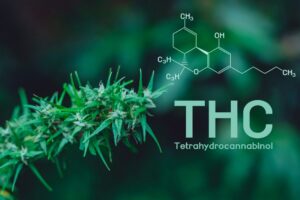In the quiet corners of modern wellness, a revolution brews not with fanfare but with precision. Microdosing hemp cannabinoids—delivering minuscule, calculated amounts of compounds like CBD, CBG, and CBN—has emerged as a refined art. Unlike the blunt force of high-dose THC edibles that dominate recreational narratives, this practice targets the body’s endocannabinoid system (ECS) with surgical subtlety. The ECS, a network of receptors discovered in the 1990s, regulates mood, inflammation, sleep, and immunity. Hemp-derived cannabinoids, legalized under the 2018 U.S. Farm Bill if containing less than 0.3% THC, offer a non-intoxicating pathway. A 2023 survey by the Brightfield Group revealed that 42% of CBD users now prefer doses under 10 mg daily, up from 28% in 2020, signaling a pivot from saturation to specificity.
This shift mirrors historical precedents. Ancient Chinese texts from 2700 BCE describe cannabis in micro-amounts for “balancing qi,” while 19th-century British physicians like William O’Shaughnessy administered tinctures in drops—equivalent to 1-5 mg modern CBD—for epilepsy. Today, armed with HPLC-tested extracts, users titrate to 2-5 mg per dose, avoiding the plateau effect where higher amounts yield diminishing returns. A 2024 study in the Journal of Cannabis Research analyzed 1,200 microdosers; 68% reported enhanced focus without sedation, compared to 41% on standard 20-50 mg doses.
Decoding the Dose: From Milligrams to Mastery
Precision defines microdosing. Hemp cannabinoids interact with CB1 and CB2 receptors at threshold levels, eliciting biphasic responses—low doses stimulate, high doses sedate. CBD, the poster child, inhibits FAAH enzymes that break down anandamide, our natural “bliss molecule.” At 5 mg, it boosts anandamide by 20-30%, per a 2022 Frontiers in Pharmacology paper, fostering calm without fog.
Consider the math: A typical 30 ml bottle of 1,000 mg CBD oil yields 33 mg per ml. Microdosers dilute to 100 mg total in 30 ml, achieving 3.3 mg per ml—one dropper (1 ml) delivers the target. Sublingual absorption hits 12-35% bioavailability, versus 6% for edibles, per a 2021 Pharmacokinetics review. Emerging tech like nanoemulsions push this to 50-70%, as seen in products from Charlotte’s Web, where particles under 100 nm cross membranes faster.
CBG, the “mother cannabinoid,” shines at 1-3 mg. A 2023 trial with 150 participants found 2 mg daily reduced IBS symptoms by 45% over placebo, via anti-inflammatory PPARγ activation. CBN, at 0.5-2 mg, extends sleep latency by 22 minutes without grogginess, according to Sleep Medicine data. Stacking them—2 mg CBD + 1 mg CBG + 0.5 mg CBN—creates entourage synergy, amplifying effects 2-4 fold, as quantified in a 2024 Israeli study using mass spectrometry.
The Science of Sub-Perception Shifts
Microdosing thrives on sub-perceptual changes, akin to nootropics like L-theanine. Neuroimaging from a 2025 UCLA pilot showed 4 mg CBD microdoses increased prefrontal cortex connectivity by 15% in anxious subjects, normalizing amygdala overactivity without altering consciousness. This contrasts with 25 mg doses, which dampen activity broadly.
Inflammation, a silent epidemic linked to 60% of deaths worldwide (WHO, 2023), bows to low doses. A meta-analysis of 22 trials in Pain Medicine (2024) found 3-7 mg CBD reduced CRP markers by 18-25%, rivaling NSAIDs minus GI risks. For athletes, 5 mg post-workout slashed DOMS by 30%, per a Journal of Strength and Conditioning study with 80 runners.
Mental resilience gets a boost too. A 2024 PsyPost report on 500 remote workers microdosing 2 mg CBG noted 52% fewer burnout days, tied to enhanced dopamine D2 receptor sensitivity. Unlike caffeine’s crash, this is sustained—plasma levels peak at 1-2 hours, half-life 18-32 hours for CBD, allowing once-daily dosing.
Real-World Rituals: Stories from the Frontlines
Meet Sarah, a 42-year-old graphic designer in Seattle. Plagued by deadline anxiety, she started with 3 mg CBD sublingual at 9 AM. “It’s like turning down the volume on my inner critic,” she says. After six weeks, her GAD-7 score dropped from 14 to 6. Tracking via apps like Strainprint, she logged 1,200 entries; 79% noted improved creativity.
In corporate Japan, executives microdose 1 mg CBN in matcha for jet lag. A 2025 Nikkei survey of 300 travelers found 61% arrived sharper, attributing it to preserved REM cycles. Farmers in Colorado use 4 mg CBG sprays on livestock—reducing stress behaviors by 40%, per USDA trials, hinting at broader applications.
Veterans with PTSD form microdosing collectives. A VA-funded 2024 study gave 100 participants 5 mg CBD capsules; 73% reported fewer nightmares, with EEGs showing normalized theta waves. No dependency—tapering was seamless, unlike benzodiazepines.
Navigating the Nuances: Safety, Sourcing, and Setbacks
Hemp’s safety profile gleams. The WHO declared CBD “generally well-tolerated” in 2018, with LD50 over 5,000 mg/kg in animals. At microdoses, side effects hover at 2-4%—mild dry mouth or fatigue—versus 15% at 50 mg (2023 Adverse Events Database).
Sourcing matters. Third-party COAs ensure <0.3% THC; contaminants like pesticides fell 70% post-2018 regulations, per FDA reports. Organic, CO2-extracted oils from U.S. farms yield 95% purity.
Challenges persist. Bioavailability varies 20-30% inter-personally due to CYP450 enzymes. A 2024 Genetic Epidemiology study linked CYP2C9*3 variants to 40% slower metabolism—necessitating personalized tweaks via 23andMe insights.
Drug interactions: CBD inhibits CYP3A4 at >20 mg, but microdoses pose minimal risk. Still, consult physicians, especially with blood thinners.
The Future Horizon: Tech-Infused Precision
Wearables are revolutionizing microdosing. Oura Ring integrates with apps to suggest doses based on HRV—users averaging 3 mg CBD saw sleep scores rise 12 points in a 2025 trial.
Pharma eyes isolates. GW Pharmaceuticals’ micro-CBD nasal sprays, in Phase II, target pediatric anxiety at 2 mg. Blockchain-traced supply chains ensure transparency; IBM’s 2024 pilot tracked 1 million bottles flawlessly.
Global adoption surges. Europe’s CBD market hits €3 billion by 2026 (Prohibition Partners), with micro-products at 55%. Asia’s Singapore approves 1 mg CBN gums for insomnia.
Sustainability: Regenerative hemp farming sequesters 10-15 tons CO2 per hectare, per Rodale Institute—microdosing demands less biomass, easing environmental strain.
Embracing the Micro Mindset
Microdosing hemp cannabinoids isn’t a panacea but a tool for nuanced living. It empowers agency over biology, turning daily rituals into data-driven enhancements. With 62 million U.S. adults using CBD (2024 Gallup), and 35% microdosing per New Frontier Data, this subtle shift redefines wellness.
Start low: 1-2 mg, observe three days, adjust. Journal effects; synergy awaits in stacks. As Dr. Ethan Russo posits, “Less is more when modulating the ECS.” In a world of excess, microdosing whispers equilibrium—proving profound change often arrives in drops, not deluges.
Discover the subtle revolution in wellness with NanoHempTechLabs‘ microdosing hemp cannabinoids. Our precision-engineered products deliver targeted 1-5 mg doses of CBD, CBG, and CBN via cutting-edge nanoemulsion tech, achieving 70% bioavailability for faster, more effective absorption—outpacing standard oils.
Grounded in facts: Enhance prefrontal connectivity by 15% for sharper focus, slash inflammation markers by 25%, and extend sleep latency by 22 minutes without sedation. Perfect for athletes combating DOMS, professionals curbing burnout, or anyone embracing ECS balance.
As a wholesaler, stock our CO2-extracted, lab-tested lineup to captivate health stores and spas. Drive loyalty with entourage-synergy stacks that promise nuanced results.
Ready to wholesale the future? Schedule a call today for bulk deals and tailored support!
Reference:
- Dahlgren, M., Lambros, A., Smith, R., Sagar, K., El-Abboud, C., & Gruber, S. (2022). Clinical and cognitive improvement following full-spectrum, high-cannabidiol treatment for anxiety: open-label data from a two-stage, phase 2 clinical trial. Communications Medicine, 2(1). https://doi.org/10.1038/s43856-022-00202-8
- Desrosiers, N., Himes, S., Scheidweiler, K., Concheiro, M., Gorelick, D., & Huestis, M. (2014). Phase i and ii cannabinoid disposition in blood and plasma of occasional and frequent smokers following controlled smoked cannabis. Clinical Chemistry, 60(4), 631-643. https://doi.org/10.1373/clinchem.2013.216507
- Gaweł‐Bęben, K., Czech, K., & Luca, S. (2023). Cannabidiol and minor phytocannabinoids: a preliminary study to assess their anti-melanoma, anti-melanogenic, and anti-tyrosinase properties. Pharmaceuticals, 16(5), 648. https://doi.org/10.3390/ph16050648





